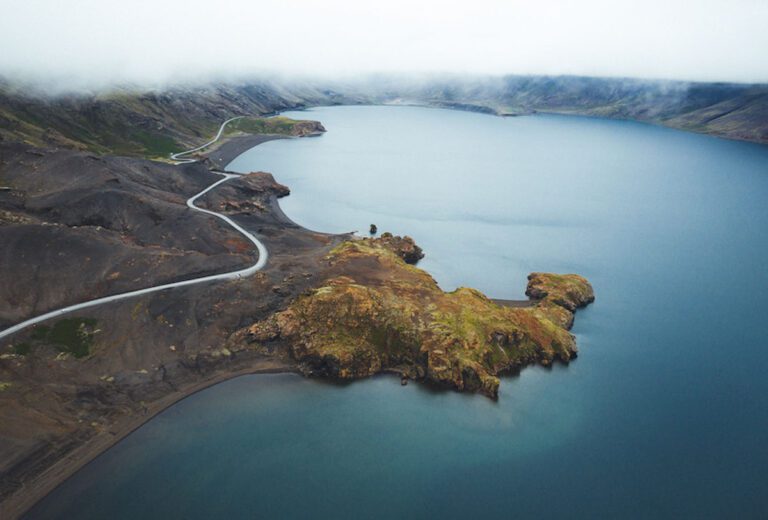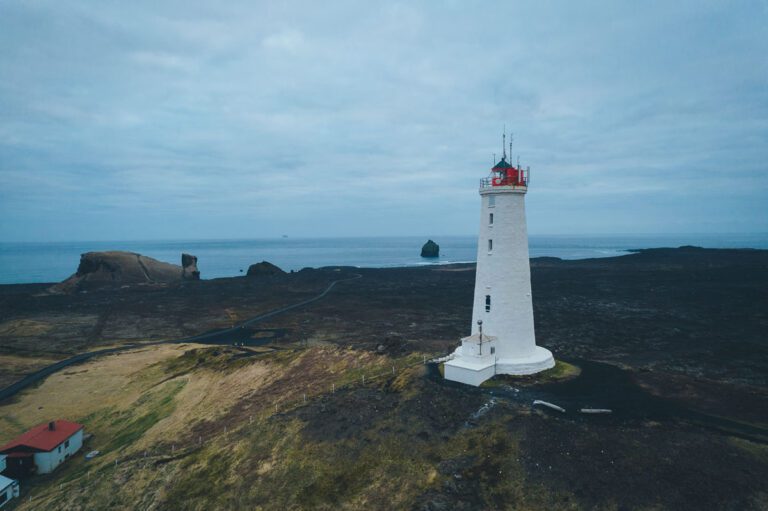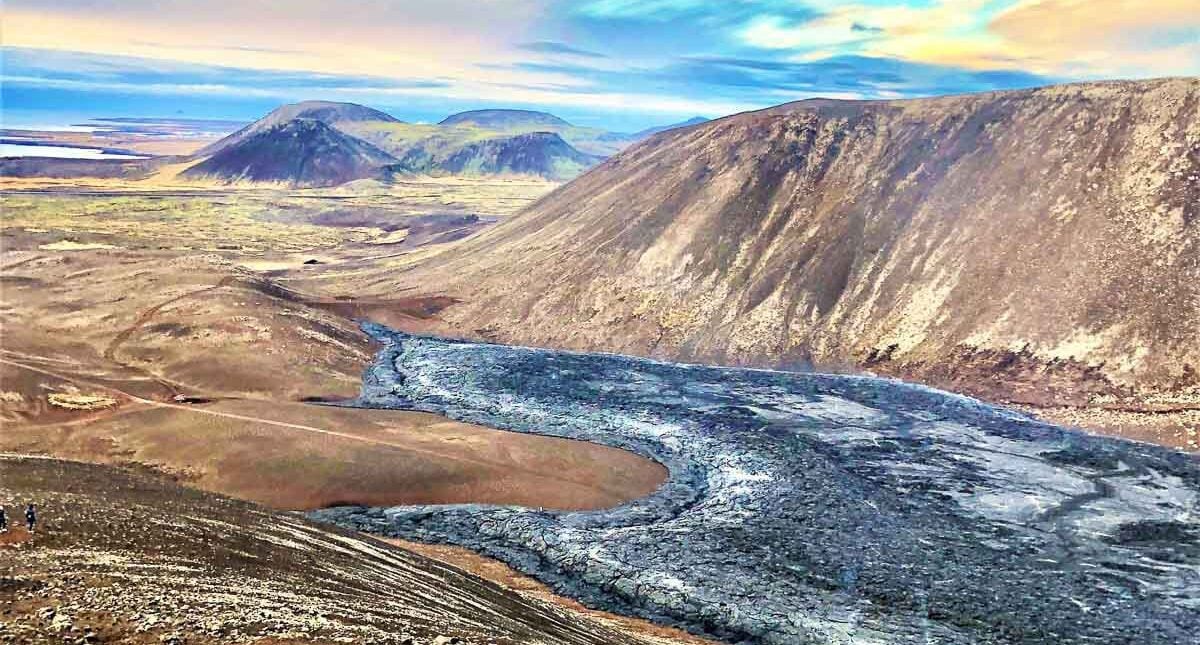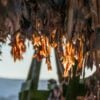Private Reykjanes Peninsula Tour

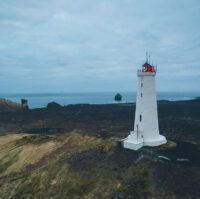

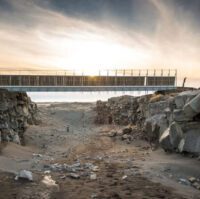

In the heart of the Reykjanes Peninsula, the Geopark stands as a testament to nature’s artistry, with volcanic and geothermal wonders setting the stage. The backcountry of this same peninsula gently reveals a mosaic of landscapes, each narrating its own story of natural miracles and breathtaking allure, all just moments away from the vibrant Reykjavík. This proximity to the nature-enshrouded capital allows a tranquil exploration of Reykjanes, with ample moments to marvel, yet little time on winding roads. Opting for a private journey, guided by our seasoned and passionate experts, transforms your adventure, making it deeply personal and enchantingly memorable.
Amidst a backdrop of lava, the fish-hangars stand, while Lake Kleifarvatn whispers tales through its mesmerizing beaches and ancient rock formations. Then, there’s the warmth of Seltún and Gunnuhver hot springs, and the quaint charm of Grindavík fishing village. Dive into the cerulean embrace of the Blue Lagoon, or let the Reykjanesviti lighthouse guide your gaze to the shoreline’s wonders. And in this GeoPark, the bridge between continents beckons, offering a serene stroll between the world’s tectonic divides.
Please keep in mind:
- The cost is for the entire vehicle, not each individual.
- To enhance your experience, consider concluding your day with a relaxing dip in the Blue Lagoon’s warm waters. Reach out to us for details and pricing.



Tour highlights & itinerary
- Private transportation
- Experienced guide
- Tasting of local food
- Pick up and drop off
- Wi-fi on board
- Meals & drinks
- Additional stops/entrance fees to sites not stated in the description
- Warm, waterproof clothing
- Comfortable footwear
- Swimsuit if you wish to add Blue Lagoon experience to your tour (additional cost)
- The duration of the tour is 6,5 hours
- There is no food included on this tour but there will be stops where you are able to purchase food
- Please inform us of the following information upon booking:
- How many passengers will be travelling in the group
- Accommodation location
- Desired departure time
- Any questions you may have
- If you want to add Blue Lagoon experience to the tour
- Our private tour guides speak: English, Francaise, Deutsch, Español
- Cancellation policy: Cancellation fee of 100% is charged if cancelled 72 hours or or less before departure
Write a review
Share your experience with others.
Itinerary
Itinerary
- Pick-upReykjavik
A mere 30-minute drive from the vibrant capital immerses us in the heart of the volcanic Reykjanes Peninsula, enveloped by nature. Our journey into this geologic wonder begins with a picturesque drive through enchanting lava fields cloaked in a lush blanket of green moss.
The Reykjanes Peninsula stands as a volcanic marvel, showcasing rare natural wonders: expansive rift zones, lava fields blanketed in moss, geothermal areas, mountainous lakes, quaint fishing hamlets, and striking coastal landscapes. Positioned along the prominent Mid Atlantic Ridge, Reykjanes straddles the tectonic plates of Eurasia and North America. Their gradual separation gives rise to observable fissures and lively volcanic phenomena.

1 Fish Drying RacksOur first stop introduces us to a peculiar wooden structure nestled within the lava field. In Iceland, drying fish as a preservation method is a longstanding tradition, typically done outdoors during the crisp, cold winter months. While traces of this age-old custom persist in various Icelandic locales with fish drying on outdoor racks, modern renewable energy and local expertise have transitioned this practice indoors for year-round production. The fish drying racks at Reykjanes transport us back in time, greeting us with picturesque vistas and a potent aroma, once regarded as the scent of prosperity. Sampling the local delicacy, “Harðfiskur,” is a given on this journey.

2 Lake KleifarvatnLeaving the distinctive aroma of fish behind, we journey across the Sveifluháls mountain range, witnessing a transformative shift in the landscape. Emerging on the other side is Lake Kleifarvatn, characterized by its striking black sand shores, enigmatic rock figures, and weather-sculpted sandstones. We follow the scenic route as it winds along the rugged coastline, pausing at its pinnacle to absorb the breathtaking panorama.
Kleifarvatn, the Reykjanes Peninsula’s largest lake, is cradled by mountains of palagonite and sandstone, shaped by ancient eruptions beneath ice. Adorning its shores are dark basalt beaches and artistic rock structures, etched by eons of elemental forces. The lake’s level has been influenced by frequent geological activities in the region, which in the past, have drained it and birthed submerged hot springs. Enriching the lake’s allure are local legends, bestowing upon it an added layer of mystique.

3 Seltún Geothermal AreaJust a short drive from the lake’s highest point, we arrive at our next destination: the Seltún geothermal field. Seltún boasts a rich tapestry of geothermal wonders, from mud pots and steam vents to effervescent pools, all adorned with a vibrant palette of colors and the distinct aroma of sulfuric steam. As a significant high geothermal area, Seltún presents a breathtaking canvas painted with hues of red, yellow, gray, white, and green. The mud pools audibly bubble and hiss, releasing a substantial amount of pungent sulfur steam. Historically, this “yellow gold” was a significant Icelandic export from the Middle Ages to the 18th century, utilized in the manufacture of gunpowder and cannon powder in Europe.

4 Grindavík Fising VillageNavigating the southern stretch of the peninsula is a visual treat, where expansive lava fields merge with the Atlantic, crafting a dramatic tableau leading up to the Grindavík fishing village. Grindavík, deeply rooted in its fishing heritage, serves as a focal point of Iceland’s maritime culture and an ideal spot for a fresh fish meal.
Grindavík, a picturesque Icelandic fishing hamlet, boasts one of the country’s most bustling harbors. With a population of 3,300, the town predominantly revolves around fishing and associated industries. Remarkably, Grindavík accounts for nearly half of Iceland’s salt fish output.

5 Gunnuhver HotspringsFollowing our meal, we venture to the Gunnuhver hot springs, where saltwater-driven mud pots bubble and steam vents audibly hiss. Gunnuhver’s haunted spring continuously emits thick, hazy steam that can reach temperatures of up to 300 degrees Celsius. Adjacent to it, one of Iceland’s geothermal stations stands, converting the hot steam into electricity and capturing warm water for centralized heating. The juxtaposition of the steaming ground beside the station’s infrastructure crafts a landscape so fantastical, it’s reminiscent of a sci-fi movie setting.
Gunnuhver, named after a legendary female ghost, is distinguished as Iceland’s most expansive mud pool. Spanning 20 meters, this fiercely boiling expanse is fed by superheated saline seawater. Its potent legend, deafening rumble, and robust sulfuric fumes infuse the location with an undeniable aura of mystique.

6 Reykjanesviti Lighthouse & Coastal FeaturesWe continue to the grand Reykjanesviti lighthouse, absorbing the awe-inspiring coastal landscapes at the tip of Reykjanes, which showcases sea-cliffs, sea-stacks, and skerries. These become lively hubs for nesting seabirds during spring and summer. Reykjanesviti, standing as Iceland’s oldest lighthouse, proudly perches on the peninsula’s extremity. The area boasts remarkable coastal wonders, such as sea cliffs, sea-stacks, skerries, and islands, perpetually sculpted by the relentless North Atlantic Ocean. Come spring and summer, this region becomes a nesting haven for various seabirds, housing one of the world’s prominent gannet colonies on Eldey Island.

7 Bridge between ContinentsA brief journey leads us to the remarkable Bridge between the Continents, a rare spot on Earth where the separation of two tectonic plates is visible on land, allowing for a singular experience of walking from the Eurasian plate to the American one.
The Bridge between Continents is a 15-meter walkway bridging the vast chasm between the Eurasian and North American tectonic plates. Situated on the lava-marked peninsula atop the Mid Atlantic Ridge, this locale showcases the plates’ annual divergence by a few centimeters due to Earth’s natural forces. Uniquely, this is the sole location where this extensive global ridge remains above sea level, offering an unparalleled chance to traverse between the separating continents of North America and Europe.
We leisurely traverse the northern region of the Peninsula on our return journey to the city. Anticipate an hour for your tranquil drive back to Reykjavík. If you’re inclined to cap off your day with a dip in the cerulean waters of the Blue Lagoon, kindly inform us well ahead, allowing us to coordinate the arrangements for you.

8 Blue Lagoon-OptionEach captivating site on the Reykjanes peninsula progressively immerses you deeper into Iceland’s potent nature and the enchanting allure of the Blue Lagoon. Should you opt to conclude your day bathing in the Blue Lagoon’s geothermal embrace, you’re in for a delightful experience. Merely a 30-minute drive from the bridge between continents, the distinctive Blue Lagoon is nestled within a dramatic black lava field.
Recognized in Icelandic as Bláa Lónið, the Blue Lagoon stands as a celebrated geothermal spa set on the Reykjanes peninsula. Acknowledged as one of the contemporary wonders, its fame has surged since its initiation in 1976. While manmade, the lagoon is replenished by a neighboring geothermal plant that provides warm water to adjacent communities. In 1971, plant workers fashioned the inaugural pool for leisure and relaxation. By 1981, locals started frequenting the spot, culminating in the establishment of the Blue Lagoon company in 1992, which gave rise to the modern amenities that cater to its visitors today.
- Drop-offReykjavik
As we make our way back to Reykjavík at day’s end, we pass through the delightful fishing town of Hafnarfjörður, famed for its playful humor, Viking heritage, and tales of elves.























A mere 30-minute drive from the vibrant capital immerses us in the heart of the volcanic Reykjanes Peninsula, enveloped by nature. Our journey into this geologic wonder begins with a picturesque drive through enchanting lava fields cloaked in a lush blanket of green moss.
The Reykjanes Peninsula stands as a volcanic marvel, showcasing rare natural wonders: expansive rift zones, lava fields blanketed in moss, geothermal areas, mountainous lakes, quaint fishing hamlets, and striking coastal landscapes. Positioned along the prominent Mid Atlantic Ridge, Reykjanes straddles the tectonic plates of Eurasia and North America. Their gradual separation gives rise to observable fissures and lively volcanic phenomena.

Our first stop introduces us to a peculiar wooden structure nestled within the lava field. In Iceland, drying fish as a preservation method is a longstanding tradition, typically done outdoors during the crisp, cold winter months. While traces of this age-old custom persist in various Icelandic locales with fish drying on outdoor racks, modern renewable energy and local expertise have transitioned this practice indoors for year-round production. The fish drying racks at Reykjanes transport us back in time, greeting us with picturesque vistas and a potent aroma, once regarded as the scent of prosperity. Sampling the local delicacy, “Harðfiskur,” is a given on this journey.
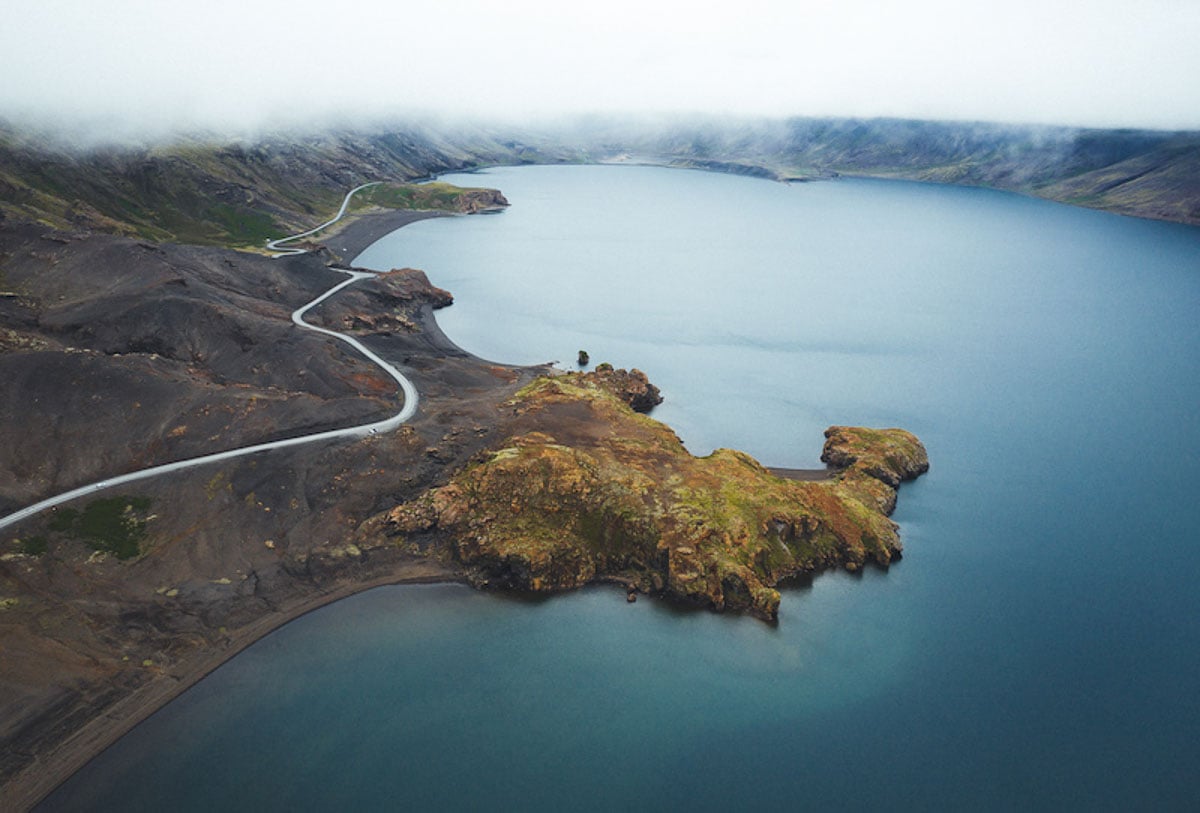
Leaving the distinctive aroma of fish behind, we journey across the Sveifluháls mountain range, witnessing a transformative shift in the landscape. Emerging on the other side is Lake Kleifarvatn, characterized by its striking black sand shores, enigmatic rock figures, and weather-sculpted sandstones. We follow the scenic route as it winds along the rugged coastline, pausing at its pinnacle to absorb the breathtaking panorama.
Kleifarvatn, the Reykjanes Peninsula’s largest lake, is cradled by mountains of palagonite and sandstone, shaped by ancient eruptions beneath ice. Adorning its shores are dark basalt beaches and artistic rock structures, etched by eons of elemental forces. The lake’s level has been influenced by frequent geological activities in the region, which in the past, have drained it and birthed submerged hot springs. Enriching the lake’s allure are local legends, bestowing upon it an added layer of mystique.

Just a short drive from the lake’s highest point, we arrive at our next destination: the Seltún geothermal field. Seltún boasts a rich tapestry of geothermal wonders, from mud pots and steam vents to effervescent pools, all adorned with a vibrant palette of colors and the distinct aroma of sulfuric steam. As a significant high geothermal area, Seltún presents a breathtaking canvas painted with hues of red, yellow, gray, white, and green. The mud pools audibly bubble and hiss, releasing a substantial amount of pungent sulfur steam. Historically, this “yellow gold” was a significant Icelandic export from the Middle Ages to the 18th century, utilized in the manufacture of gunpowder and cannon powder in Europe.

Navigating the southern stretch of the peninsula is a visual treat, where expansive lava fields merge with the Atlantic, crafting a dramatic tableau leading up to the Grindavík fishing village. Grindavík, deeply rooted in its fishing heritage, serves as a focal point of Iceland’s maritime culture and an ideal spot for a fresh fish meal.
Grindavík, a picturesque Icelandic fishing hamlet, boasts one of the country’s most bustling harbors. With a population of 3,300, the town predominantly revolves around fishing and associated industries. Remarkably, Grindavík accounts for nearly half of Iceland’s salt fish output.
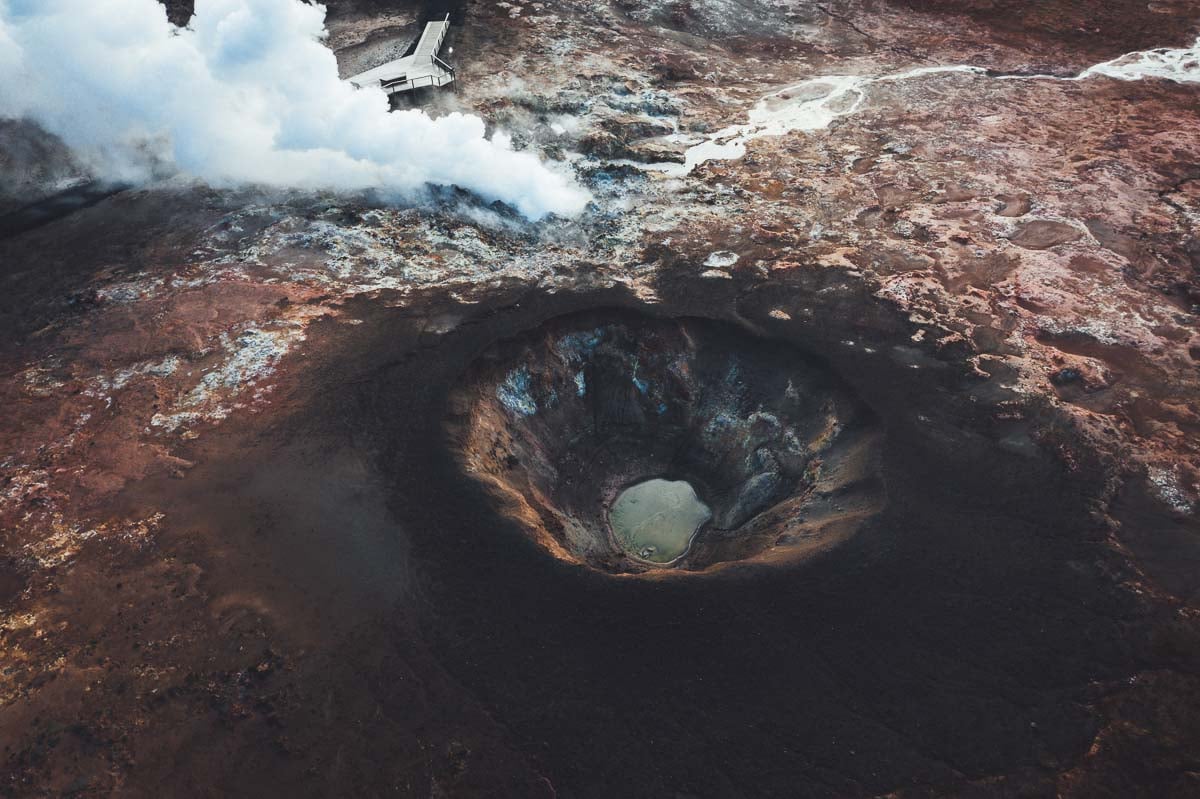
Following our meal, we venture to the Gunnuhver hot springs, where saltwater-driven mud pots bubble and steam vents audibly hiss. Gunnuhver’s haunted spring continuously emits thick, hazy steam that can reach temperatures of up to 300 degrees Celsius. Adjacent to it, one of Iceland’s geothermal stations stands, converting the hot steam into electricity and capturing warm water for centralized heating. The juxtaposition of the steaming ground beside the station’s infrastructure crafts a landscape so fantastical, it’s reminiscent of a sci-fi movie setting.
Gunnuhver, named after a legendary female ghost, is distinguished as Iceland’s most expansive mud pool. Spanning 20 meters, this fiercely boiling expanse is fed by superheated saline seawater. Its potent legend, deafening rumble, and robust sulfuric fumes infuse the location with an undeniable aura of mystique.

We continue to the grand Reykjanesviti lighthouse, absorbing the awe-inspiring coastal landscapes at the tip of Reykjanes, which showcases sea-cliffs, sea-stacks, and skerries. These become lively hubs for nesting seabirds during spring and summer. Reykjanesviti, standing as Iceland’s oldest lighthouse, proudly perches on the peninsula’s extremity. The area boasts remarkable coastal wonders, such as sea cliffs, sea-stacks, skerries, and islands, perpetually sculpted by the relentless North Atlantic Ocean. Come spring and summer, this region becomes a nesting haven for various seabirds, housing one of the world’s prominent gannet colonies on Eldey Island.

A brief journey leads us to the remarkable Bridge between the Continents, a rare spot on Earth where the separation of two tectonic plates is visible on land, allowing for a singular experience of walking from the Eurasian plate to the American one.
The Bridge between Continents is a 15-meter walkway bridging the vast chasm between the Eurasian and North American tectonic plates. Situated on the lava-marked peninsula atop the Mid Atlantic Ridge, this locale showcases the plates’ annual divergence by a few centimeters due to Earth’s natural forces. Uniquely, this is the sole location where this extensive global ridge remains above sea level, offering an unparalleled chance to traverse between the separating continents of North America and Europe.
We leisurely traverse the northern region of the Peninsula on our return journey to the city. Anticipate an hour for your tranquil drive back to Reykjavík. If you’re inclined to cap off your day with a dip in the cerulean waters of the Blue Lagoon, kindly inform us well ahead, allowing us to coordinate the arrangements for you.

Each captivating site on the Reykjanes peninsula progressively immerses you deeper into Iceland’s potent nature and the enchanting allure of the Blue Lagoon. Should you opt to conclude your day bathing in the Blue Lagoon’s geothermal embrace, you’re in for a delightful experience. Merely a 30-minute drive from the bridge between continents, the distinctive Blue Lagoon is nestled within a dramatic black lava field.
Recognized in Icelandic as Bláa Lónið, the Blue Lagoon stands as a celebrated geothermal spa set on the Reykjanes peninsula. Acknowledged as one of the contemporary wonders, its fame has surged since its initiation in 1976. While manmade, the lagoon is replenished by a neighboring geothermal plant that provides warm water to adjacent communities. In 1971, plant workers fashioned the inaugural pool for leisure and relaxation. By 1981, locals started frequenting the spot, culminating in the establishment of the Blue Lagoon company in 1992, which gave rise to the modern amenities that cater to its visitors today.
As we make our way back to Reykjavík at day’s end, we pass through the delightful fishing town of Hafnarfjörður, famed for its playful humor, Viking heritage, and tales of elves.











